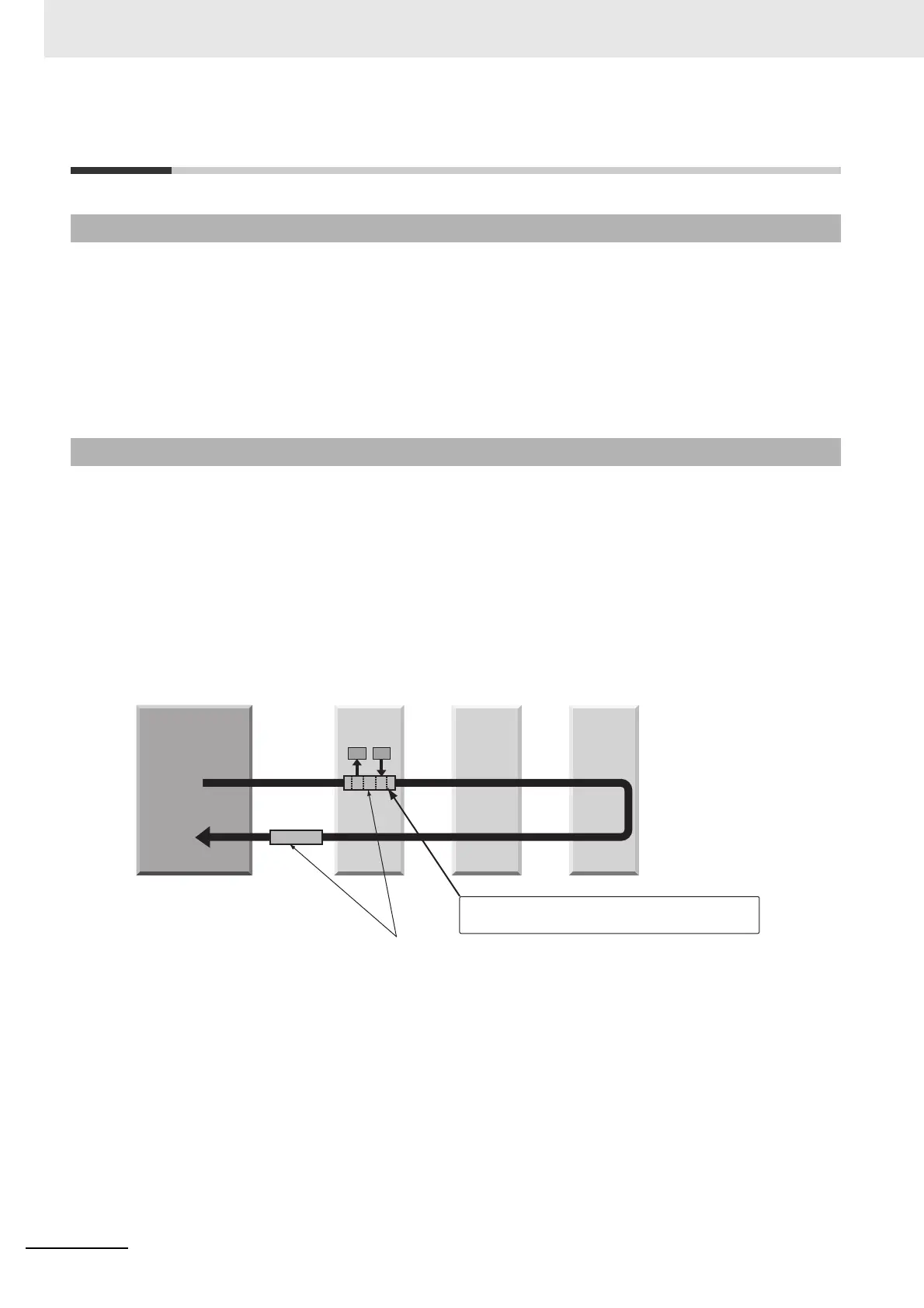1 EtherCAT Network
1 - 2
E3NW-ECT EtherCAT Digital Sensor Communication Unit Operation Manual (E429)
1-1 Overview of EtherCAT Networks
EtherCAT (Ethernet Control Automation Technology) is a high-performance industrial network system
based on Ethernet system and can realize faster and more efficient communications.
Each node achieves a short communications cycle time by transmitting Ethernet frames at high speed.
Furthermore, even though EtherCAT is a unique protocol, it offers excellent general-purpose
applicability. For example, you can use Ethernet cables because EtherCAT utilizes standard Ethernet
technology for the physical layer. And the effectiveness of EtherCAT can be fully utilized not only in
large control systems that require high processing speeds and system integrity, but also in small and
medium control systems.
EtherCAT does not send data to individual slave nodes on the network, instead, it passes Ethernet
frames through all of the slave nodes.
When frame passes through a slave node, the slave node reads and writes data in the areas allocated
to it in the frames in a few nanoseconds.
Ethernet frames sent from the EtherCAT Master Unit go through all the EtherCAT Sensor
Communication Units without stopping on the way. Once they reach the final Slave Unit, they are sent
back from the final Slave Unit, pass through all Slave Units again, and return to the EtherCAT Master
Unit.
With this structure, EtherCAT secures high-speed and real-time data transmission.
1-1-1 Features of EtherCAT
1-1-2 Structure of EtherCAT
EtherCAT
Master Unit
Slave Unit Slave Unit
Slave Unit
Ethernet frame
IN
OUT
Data
•
Reading output data addressed to the local Slave Units
• Writing input data

